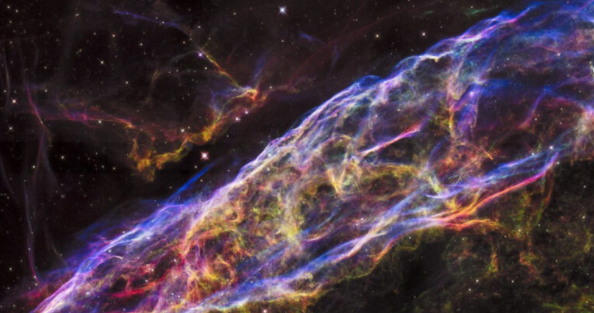Featured Posts (3520)
Reflective markers are attached to blue 3D-printed apparatus above and below the user’s knee as well as two metal plates on the exoskeleton leg. Researchers track and compare the movement of the markers to gain insight into how well the exoskeletons fit. In this composite photo, the bottom plate has been added after the original image was taken to show the entire configuration.
Credit: N. Hanacek/NIST
Topics: Applied Physics, NIST, Research, Robotics
A shoddily tailored suit or a shrunken T-shirt may not be the most stylish, but wearing them is unlikely to hurt more than your reputation. An ill-fitting robotic exoskeleton on the battlefield or factory floor, however, could be a much bigger problem than a fashion faux pas.
Exoskeletons, many of which are powered by springs or motors, can cause pain or injury if their joints are not aligned with the user. To help manufacturers and consumers mitigate these risks, researchers at the National Institute of Standards and Technology (NIST) developed a new measurement method to test whether an exoskeleton and the person wearing it are moving smoothly and in harmony.
In a new report, the researchers describe an optical tracking system (OTS) not unlike the motion capture techniques used by filmmakers to bring computer-generated characters to life.
The OTS uses special cameras that emit light and capture what is reflected back by spherical markers arranged on objects of interest. A computer calculates the position of the labeled objects in 3D space. Here, this approach was used to track the movement of an exoskeleton and test pieces, called “artifacts,” fastened to its user.
Exoskeleton Research Marches Forward With NIST Study on Fit, NIST
Art by Ramon Perez
Dark Spider kicking the truth to the young black youth.

Image Source: Link Below
Topics: Astrophysics, Interstellar, Plasma, Supernovae, Radiation
Scientists have found new evidence that Earth has been moving through the remains of exploded stars for at least the last 33,000 years.
In a new study published in the journal Proceedings of the National Academy of Sciences, a team of Australian researchers describes how they extracted a special isotope of iron called iron-60 from five deep-sea sediment samples using mass spectrometry.
That’s illuminating because as the researchers wrote in their paper, the isotope is “predominantly produced in massive stars and ejected in supernova explosions.” In other words, iron-60 is left over after a star explodes.
And because iron-60 is radioactive and decays in 15 million years, the theory is that our planet is continuously being dusted with the stuff as it’s moving through the “Local Interstellar Cloud,” a region of unclear origins made up of gas, dust, and plasma.
Scientists: Earth Moving Through Radioactive Debris of Exploded Stars, Victor Tangermann, Futurism
Gothic Fantasy Short Stories
Black Sci-Fi Anthology
The Black Sci-Fi Short Stories anthology is due to be published in April 2021 (UK) and June 2021 (US), in our Gothic Fantasy series, joining existing titles such as A Dying Planet, Time Travel, Alien Invasion, Endless Apocalypse, Robots & Artificial Intelligence, Dystopia Utopia and more.
As always, we are keen to encourage new writers, without prejudice to age, background or previous publication history. It’s the story that matters, and the quality of writing. Please read through the details for submissions carefully before submitting your stories and make sure to include the project name in the subject of your email.
Diversity in all aspects of publishing still has a long way to go, especially the presentation of black voices. So, as well as offering great but neglected stories that deserve to be more widely read, this latest book in our Gothic Fantasy series will be a long-overdue step for us towards pro-actively rectifying the imbalance, by devoting a whole volume to work by black writers in science fiction, new and old. Of course, science fiction sits at the core of our own publishing, and offers an invaluable forum for exploring social issues past, present and future.
With a foreword by Alex Award-winning novelist Temi Oh, an introduction by Sandra M. Grayson, author of Visions of the Third Millennium: Black Science Fiction Novelists Write the Future (2003), and invaluable promotion from Tia Ross and the Black Writers Collective and more, this latest offering in the Flame Tree Gothic fantasy series focuses on an area of science fiction which has not received the attention it deserves. Many of the themes in Sci-fi reveal the world as it is to others, show us how to improve it, and give voice to the many different expressions of a future for humankind.
Dystopia, apocalypse, gene-splicing, cloning, colonization and much more can be explored here – in fantastic stories, whether informed by the black experience or not. The selected submissions will be combined with writing of an older tradition (by authors such as Martin Delany, Edward Johnson, Pauline Hopkins and W.E.B. Dubois) whose first-hand experience of slavery and denial created their living dystopia.
Word count is approx. 2000–4000 and submissions will be accepted between 24th August and 21st September – please send to 2020@flametreepublishing.com, ensuring ‘Black Sci-Fi’ is in the subject line. Payment will be 8 cents/6 pence for each word (SFWA qualifying market rate) and 6 cents/4 pence for reprints. If your story is a reprint please let us know in your submission email. Multiple submissions are accepted.
We will aim to read each story and confirm its status within 4 months of the submission deadline.
Key partners in this publication include:
Temi Oh graduated with a BSci in Neuroscience. Her degree provided great opportunities to write and learn about topics ranging from ‘Philosophy of the Mind’ to ‘Space Physiology’. While at KCL, Temi founded a book-club called ‘Neuroscience-fiction’, where she led discussions about science-fiction books which focus on the brain. In 2016, she received an MA in Creative Writing from the University of Edinburgh. Her first novel, DO YOU DREAM OF TERRA-TWO?, was published by Simon & Schuster in 2019 and won the American Library Association’s Alex Award. She has loved and gifted Flame Tree's beautiful books for many years and is thrilled to be part of this project.
Dr. Sandra M. Grayson is a tenured Full Professor in the English Department at University of Wisconsin-Milwaukee. Her numerous publications include the books Visions of the Third Millennium: Black Science Fiction Novelists Write the Future; Symbolizing the Past: Reading Sankofa, Daughters of the Dust, and Eve’s Bayou as Histories; A Literary Revolution: In the Spirit of the Harlem Renaissance; and Sparks of Resistance, Flames of Change: Black Communities and Activism.
Tia Ross is the Founder of the Black Writers Collective (BlackWriters.org), the Founder/Managing Editor for Black Editors & Proofreaders, Editor for ColorOfChange.org and more. She is a polymath entrepreneur who is passionate about great writing, as well as forging successful businesses as an information architect and event organiser.
The fin LED pixel design includes the glowing zinc oxide fin (purple), isolating dielectric material (green), and metal contact (yellow atop green). The microscopic fins, which the research team arranged into comb-like arrays, show an increase in brightness of 100 to 1,000 times over conventional submicron-sized LED designs.
Credit: B. Nikoobakht, N. Hanacek/NIST
Topics: Light-Emitting Diode, Nanotechnology, Solid-State Physics
A new design for light-emitting diodes (LEDs) developed by a team including scientists at the National Institute of Standards and Technology (NIST) may hold the key to overcoming a long-standing limitation in the light sources’ efficiency. The concept, demonstrated with microscopic LEDs in the lab, achieves a dramatic increase in brightness as well as the ability to create laser light — all characteristics that could make it valuable in a range of large-scale and miniaturized applications.
The team, which also includes scientists from the University of Maryland, Rensselaer Polytechnic Institute, and the IBM Thomas J. Watson Research Center, detailed its work in a paper published today in the peer-reviewed journal Science Advances. Their device shows an increase in brightness of 100 to 1,000 times over conventional tiny, submicron-sized LED designs.
A Light Bright and Tiny: NIST Scientists Build a Better Nanoscale LED
B. Nikoobakht, R.P. Hansen, Y. Zong, A. Agrawal, M. Shur and J. Tersoff. High-brightness lasing at submicrometer enabled by droop-free fin light-emitting diodes (LEDs). Science Advances. August 14, 2020. DOI: 10.1126/sciadv.aba4346
Dark Spider with some of his Mentors
Art by Pete Cacho.
Beloved daughter dear of mine
Chosen by the Three Divine
Precious being at your birth
Will you ever know your worth...?
They tell me to let you go,
That you were born for such, and so
All onlookers say to me:
"What a blessing this child be!"
One day, just as is foretold,
I won't have your hand to hold.
You will go to Far Away
And I will ever mourn that day.
Ages pass before you'll see
How much you had meant to me.
But until then, with tears to trace,
I'll keep you in my embrace
And try to stave the hands of time,
Most beloved dear of mine.
(A poem from the heart of Kina's mother, in my coming "A Mikal's Child" series.)
If you gave birth to a child who you *knew* would randomly leave home on their own before they were five years old based on a prophecy, would you fight against that prophecy or agree with others in society to simply accept what will happen?
Exclusive art downloads from new releases, peeks at coming titles, and insight into no less than 5 parallel realities are being woven together in my new Patreon Page.
patreon.com/chronicler9
Hello, everyone!
I've published a new short story set in my worlds of T'vanna. They can be found in the Tales of T'vanna series on Amazon.

The thin-film materials being tested during development. Courtesy: I Mathews
Topics: Alternate Energy, Internet of Things, Materials Science, Solar Power
Photovoltaic cells made from cadmium telluride (CdTe) – already widely used in solar energy generation – also excel at harvesting ambient light indoors, making them an excellent energy source for the fast-growing Internet of Things (IoT). This is the finding of researchers at the Massachusetts Institute of Technology (MIT) in the US and the Tyndall National Institute at the University of Cork, Ireland, who fabricated low-cost CdTe cells and measured their photovoltaic response when exposed to light from various sources, including LED bulbs.
At present, indoor IoT devices such as wireless sensors are typically powered by batteries. However, study lead author Ian Mathews says that photovoltaic cells would be better because of they require less maintenance and are cheaper and easier to make. In his view, these characteristics present a “significant market opportunity” for CdTe cells in particular, yet researchers have rarely tested their effectiveness at converting ambient light (from incandescent, compact fluorescence, or LED bulbs, for example) into electrical energy. Instead, previous studies of indoor-light energy generation have mainly focused on rival photovoltaic technologies, such as silicon, III-V semiconductors, organic PV devices, and perovskite materials.
Thin-film solar cells make champion harvesters of ambient light, Isabelle Dumé, Physics World

Occator Crater and Ahuna Mons appear together in this view of the dwarf planet Ceres obtained by NASA's Dawn spacecraft on February 11, 2017. NASA/JPL-Caltech/UCLA/MPS/DLR/IDA/Handout via REUTERS.
Topics: Asteroids, Exoplanets, Space Exploration, Spaceflight
"Ceres was the Roman goddess of agriculture, grain, and the love a mother bears for her child. She was the daughter of Saturn and Ops, the sister of Jupiter, and the mother of Proserpine. Ceres was a kind and benevolent goddess to the Romans and they had a common expression, "fit for Ceres," which meant splendid." Source: Ceresva.org
WASHINGTON (Reuters) - Ceres, the largest object in the asteroid belt between Mars and Jupiter, is an “ocean world” with a big reservoir of salty water under its frigid surface, scientists said in findings that raise interest in this dwarf planet as a possible outpost for life.
Research published on Monday based on data obtained by NASA’s Dawn spacecraft, which flew as close as 22 miles (35 km) from the surface in 2018, provides a new understanding of Ceres, including evidence indicating it remains geologically active with cryovolcanism - volcanoes oozing icy material.
The findings confirm the presence of a subsurface reservoir of brine - salt-enriched water - remnants of a vast subsurface ocean that has been gradually freezing.
“This elevates Ceres to ‘ocean world’ status, noting that this category does not require the ocean to be global,” said planetary scientist and Dawn principal investigator Carol Raymond. “In the case of Ceres, we know the liquid reservoir is regional scale but we cannot tell for sure that it is global. However, what matters most is that there is liquid on a large scale.”
Dwarf planet Ceres is 'ocean world' with salty water deep underground, Will Dunham, Reuters Science

A fan-made cover for George Orwell's novel. "Animal Farm" is one of Orwell's most well-known works and gained unlikely popularity with Ukrainian refugees. (Photo from Flickr user Ben Templesmith.) PRI.org
Topics: Civics, Civil Rights, Existentialism, Fascism, Human Rights
Farmers feed their pigs slop, a messy, wet mix of various leftovers—and when they do, they can say they slop the pigs. A derogatory way to talk about food that doesn't look very tasty is to call it to slop. And you can call sticky, overly sentimental music, writing, or film slop as well. Source: Vocabulary.com
When President Obama used an executive order for deferred action for childhood arrivals (DACA), that was considered constitutional overreach and tyranny from the executive branch. That was likely the executive at the time and the children in question are both brown. This was due to the GOP-dominated Congress not passing a DREAMS Act for those same children's path to citizenship. Immigration reform used to be a thing with republicans: Saint Ronald Reagan made a whole bunch of illegal immigrants citizens, and that might have contributed to the high numbers his republican successor, George W. Bush enjoyed for his 2004 reelection. That compassionate conservatism advantage has been dwindling ever since, at least until our current moment of discontent.
Ben Sasse called Orange Satan's executive orders unconstitutional slop, which it is. His clap back to the middle school mean-girl tweetstorm from Mango Mussolini is an admittance: "I don't need you to get reelected, you need me." He like a lot of other Republican senators had their constitutional duty to remove a criminal from office. They are the beneficiaries of Jim Crow, the Southern Strategy, Voter Purging, and Suppression. They shirked it because they are criminals themselves. Conditional integrity is still cowardice.
HuffPost senior White House correspondent S.V. Dáte asked the president during Thursday’s coronavirus task force briefing if, after 3½ years, “do you regret at all the lying you’ve done to the American people? All the dishonesties?”
“That who has done?” Trump replied.
“You have done,” said Dáte, who wrote at length about Trump’s “Ministry of Untruth” earlier this year.
Trump paused and then moved on to the next question.
In his report, Dáte noted that Trump’s stream of falsehoods across nearly every topic and in any setting is corroding America’s democracy as it normalizes lies coming from the nation’s highest office.
Trump's Response When Asked If He Regrets All The Lies He's Told America: None, Josephine Harvey, HuffPost
We have a view of history that fascism doesn't need competency. Hitler was quite literally a shit show, and the mythology of Nazi efficiency is...just that.
It's poignant that Senator Kamala Harris is African Diaspora through her Jamaican father and Indian Diaspora through her mother - both immigrants who met in Oakland, California where she and her sister were born as American citizens. Both marched and shouted for Civil Rights for all its citizens, especially their daughters, as civil rights have never had a hue, simply for and of humans. America, India, Germany have had and have caste systems that assign portions of humanity to either the apex of the pyramid where all riches are siphoned to or the base where all the weight of society crushes pariahs beneath it. She's a woman that self-identifies with black culture through her HBCU - Howard University and her Sorority, Alpha Kappa Alpha. She married another human that happens to be of European descent. She is above all, an earthling, and Oakland isn't a crater on Mars. Her fraternity brother, Dr. Martin Luther King, Jr - found himself in an inflection of revelation.
Caste (Oprah's Book Club): The Origins of Our Discontents, Isabelle Wilkerson
In 1935, Nazi Germany passed two radically discriminatory pieces of legislation: the Reich Citizenship Law and the Law for the Protection of German Blood and German Honor. Together, these were known as the Nuremberg Laws, and they laid the legal groundwork for the persecution of Jewish people during the Holocaust and World War II.
When the Nazis set out to legally disenfranchise and discriminate against Jewish citizens, they weren’t just coming up with ideas out of thin air. They closely studied the laws of another country. According to James Q. Whitman, author of Hitler’s American Model, that country was the United States.
“America in the early 20th century was the leading racist jurisdiction in the world,” says Whitman, who is a professor at Yale Law School. “Nazi lawyers, as a result, were interested in, looked very closely at, [and] were ultimately influenced by American race law.”
In particular, Nazis admired the Jim Crow-era laws that discriminated against black Americans and segregated them from white Americans, and they debated whether to introduce similar segregation in Germany.
Yet they ultimately decided that it wouldn’t go far enough.
How the Nazis Were Inspired by Jim Crow, Becky Little, History.com
Fascism, like its cousin racism, doesn't need rationality over "us" and "them." It allows one group to dominate another without guilt, or blame for the consequences. It allows you to long for mythological glory times where Germany and America were "great again."
Fascism in Germany or America just needed enablers, and frankly, intellectuals that underestimate how a cornered animal - hog, rodent or narcissist - is its most dangerous and cunning when it figures it's going to die in prison and has nothing - other than its freedom - to lose.
The conduit, son of the God of Scrawl.

FIG. 1. (a) Schematic of an inline digital holographic microscope. In a typical setup, a collimated laser (light red) illuminates a sample, which scatters light (dark red wavefronts). The transmitted and scattered light passes through an objective and tube lens, which focuses the light onto a digital camera. (b) A hologram of a polystyrene particle obtained from an inline holographic microscope.
Topics: Holography, Optical Physics, Microscopy, Modern Physics
ABSTRACT
Precise measurements in digital holographic microscopy by modeling the optical train, Ronald Alexander, Brian Leahy, Vinothan N. Manoharan, Journal of Applied Physics
Your story must include a sandwich.
Your story cannot be longer than 500 words
DIZZY, EXOTIC, LUMPY, TINY, TWISTED.
ADVANCE ORDER your copy of
AYELE NUBIAN WARRIOR - The Comic Book #01
(Printed Version) - $3.99 USD - $5.45 CAN
(Digital Version) - $1.50 USD - $2.05 CAN
Hit the AMGMARKET Store:
https://www.etsy.com/shop/AMGMARKET?ref=seller-platform-mcnav
Image Source: NASA.gov
Topics: Mars, NASA, Space Exploration, Spaceflight
After years of anticipation, NASA hopes to launch its latest robotic explorer, Perseverance, to Mars on Thursday, July 30, at 7:50 A.M. EDT. Set to depart Earth atop an Atlas V-541 rocket from historic Launch Complex 41 at Cape Canaveral Air Force Station in Florida, the ambitious rover is the latest in a long lineage of rolling robotic explorers that NASA has sent to the Red Planet.
If Mars 2020 is not able to blast off during its two-hour launch window tomorrow morning — due to hazardous weather or unforeseen technical issues — the space agency will have just two more weeks to get it done. That’s because after August 15, Mars and Earth will no longer be aligned in a way that allows for quick interplanetary travel, meaning NASA would have to store the rover for two years until the next favorable alignment.
“We have four objectives,” Ken Williford, Deputy Project Scientist for NASA’s Mars 2020 mission, told Astronomy earlier this year. “The first three are really our core science objectives. And the fourth is … preparing for human exploration.”
Perseverance’s science objects are: seeking out sites that were potentially habitable in the past, looking for signs of ancient microbes within rocks known to preserve life, and collecting and storing promising rock samples for a future return mission.
Mars 2020 Launch: NASA's Perseverance Rover Ready for Journey to the Red Planet, Jake Parks, Discovery Magazine
NASA: Perseverance
 |
| Image Credit: New York Times |
Topics: Civil Rights, Human Rights, John Robert Lewis
"I have fought the good fight, I have finished the race, I have kept the faith." 2 Timothy 4:7
That is why I had to visit Black Lives Matter Plaza in Washington, though I was admitted to the hospital the following day. I just had to see and feel it for myself that, after many years of silent witness, the truth is still marching on.
Emmett Till was my George Floyd. He was my Rayshard Brooks, Sandra Bland, and Breonna Taylor. He was 14 when he was killed, and I was only 15 years old at the time. I will never ever forget the moment when it became so clear that he could easily have been me. In those days, fear constrained us like an imaginary prison, and troubling thoughts of potential brutality committed for no understandable reason were the bars.
Though I was surrounded by two loving parents, plenty of brothers, sisters, and cousins, their love could not protect me from the unholy oppression waiting just outside that family circle. Unchecked, unrestrained violence and government-sanctioned terror had the power to turn a simple stroll to the store for some Skittles or an innocent morning jog down a lonesome country road into a nightmare. If we are to survive as one unified nation, we must discover what so readily takes root in our hearts that could rob Mother Emanuel Church in South Carolina of her brightest and best, shoot unwitting concertgoers in Las Vegas and choke to death the hopes and dreams of a gifted violinist like Elijah McClain.
Like so many young people today, I was searching for a way out, or some might say a way in, and then I heard the voice of Dr. Martin Luther King Jr. on an old radio. He was talking about the philosophy and discipline of nonviolence. He said we are all complicit when we tolerate injustice. He said it is not enough to say it will get better by and by. He said each of us has a moral obligation to stand up, speak up, and speak out. When you see something that is not right, you must say something. You must do something. Democracy is not a state. It is an act, and each generation must do its part to help build what we called the Beloved Community, a nation and world society at peace with itself.
Ordinary people with extraordinary vision can redeem the soul of America by getting in what I call good trouble, necessary trouble. Voting and participating in the democratic process are key. The vote is the most powerful nonviolent change agent you have in a democratic society. You must use it because it is not guaranteed. You can lose it.
You must also study and learn the lessons of history because humanity has been involved in this soul-wrenching, existential struggle for a very long time. People on every continent have stood in your shoes, through decades and centuries before you. The truth does not change, and that is why the answers worked out long ago can help you find solutions to the challenges of our time. Continue to build union between movements stretching across the globe because we must put away our willingness to profit from the exploitation of others.
Though I may not be here with you, I urge you to answer the highest calling of your heart and stand up for what you truly believe. In my life, I have done all I can to demonstrate that the way of peace, the way of love and nonviolence is the more excellent way. Now it is your turn to let freedom ring.
When historians pick up their pens to write the story of the 21st century, let them say that it was your generation who laid down the heavy burdens of hate at last and that peace finally triumphed over violence, aggression and war. So I say to you, walk with the wind, brothers and sisters, and let the spirit of peace and the power of everlasting love be your guide.
Because of the recent changes in my previous platform, I am discontinuing https://www.physics4thecool.blogspot.com and continuing on WordPress and BSFS. What follows is the post I meant for Blogger. I will miss it.
Topics: Civics, Civil Rights, COVID-19, Existentialism, Fascism, Human Rights
The current first Tuesday of November came into law in the year 1845, when America was an agrarian society, and it took a day’s travel to get to one’s polling place to exercise the franchise. It was also 15 years before the Civil War that ripped the country apart pitting north against south, industrialists against plantation slavery owners. It was a time when my people were considered 3/5th of a person, and the conception of John Robert Lewis and Barack Hussein Obama never would have entered the mostly white male property owner's thinking.
Orange Satan doesn’t have the power to alter the date of the November 3rd election. His tweet came 16 minutes into the speech above. It was also minutes from the GDP dipping 32.9%, lower than it’s ever dipped in history. The Coronavirus has defied all happy talk, magical thinking and vindictive revenge porn, seeing the initial infection hot spots were in blue states. I probably would have wanted to talk about something else as well.
But, what if it’s something far more sinister entirely? He will sincerely try to steal or cast doubt in the election. He will use Russia, China, Iran; the Abominable Snowman, because “playing by the rules” is something his spoiled brat ass never had to do. He will behave like a cornered rat, he’ll do anything to survive, not excluding refusing to leave the Oval Office. We should have contingency plans for a protracted, dramatic, televised brawl: worthy of reality TV. He’s preparing to do what he does best: tie it up in court to wear down his opponents – the American people – to just quit. “Peaceful transition” means prison time for him, and until January 20, 2021, Mango Mussolini has the nuclear codes.
The hallmark of American Democracy was always the “peaceful transition of power.” This assumed everyone played by the same rules, abide by the same reality, and generally of good character, thinking of the country far above anything they could achieve for themselves. We’re obviously not there now. Orange Satan is the personification of fear: fear of the future and the inevitable change in demographics the passage of time brings. It was the core of right wing AM talk radio that evolved to the airwaves and a certain network owned by an Aussie and Saudi prince (so “American”), spewing nightly feces that amounts to mental propaganda and bullshit.
In yesterday’s final lauding of John Robert Lewis by three presidents that didn’t need foreign help and could actually string coherent sentences together, each took their subtle and not-so-subtle swipes at the current Manchurian Puppet. The Civil Rights Movement only looked at the founding documents of this republic, and asked the simple question: are we Americans? After 400 years, and serving this country in every war since Crispus Attucks first died for the American Revolution, the compound interest from “40 acres and a mule” is astronomical, but the wounds of daily racial hatred; the perpetual knee-on-neck of the body politic is exhausting. 400 years to George Floyd is literally, the “patience of Job” on steroids.
The United States is a democracy because of black people.
When in the Course of human events it becomes necessary for one people to dissolve the political bands which have connected them with another and to assume among the powers of the earth, the separate and equal station to which the Laws of Nature and of Nature’s God entitle them, a decent respect to the opinions of mankind requires that they should declare the causes which impel them to the separation.
We hold these truths to be self-evident, that all men are created equal, that they are endowed by their Creator with certain unalienable Rights, that among these are Life, Liberty and the pursuit of Happiness. — That to secure these rights, Governments are instituted among Men, deriving their just powers from the consent of the governed, — That whenever any Form of Government becomes destructive of these ends, it is the Right of the People to alter or to abolish it, and to institute new Government, laying its foundation on such principles and organizing its powers in such form, as to them shall seem most likely to effect their Safety and Happiness.
Now, that’s the “noble” part.
Peruse down a little further in the document: “He (ahem: King George of England) has excited domestic insurrections amongst us, and has endeavoured to bring on the inhabitants of our frontiers, the merciless Indian Savages whose known rule of warfare, is an undistinguished destruction of all ages, sexes and conditions.” That part wasn’t covered in the Broadway Musical, “Hamilton.”
Reference: U.S. History: Declaration of Independence
Frederick Douglass said: “Knowledge makes a man unfit to be a slave.” As Joy Reid of MSNBC eluded, we read it. We decided we wanted it. People like Crispus Attucks, Frederick Douglass, Medgar Evers, Malcolm X, Martin Luther King and John Robert Lewis struggled and died for it, and their progeny have decided we WANT it.
The United States is nominally a Christian nation because of black people.
The alien who resides with you shall be to you as the citizen among you; you shall love the alien as yourself, for you were aliens in the land of Egypt: I am the Lord your God. Leviticus 19:34
I was hungry and you gave me food, I was thirsty and you gave me drink, I was a stranger and you welcomed me. Matthew 25:35
Do not neglect to show hospitality to strangers, for thereby some have entertained angels unawares. Hebrews 13:2
We are the 400-year strangers and angels among you, that you hang, shoot, and strangle all day long.
We are either human or not. We are either fully Americans or not.
This is either a democracy, or it’s a modern American Bund.
Or:
“Though I may not be here with you, I urge you to answer the highest calling of your heart and stand up for what you truly believe. In my life, I have done all I can to demonstrate that the way of peace, the way of love and nonviolence is the more excellent way. Now it is your turn to let freedom ring.
“When historians pick up their pens to write the story of the 21st century, let them say that it was your generation who laid down the heavy burdens of hate at last and that peace finally triumphed over violence, aggression and war. So I say to you, walk with the wind, brothers and sisters, and let the spirit of peace and the power of everlasting love be your guide.” John Robert Lewis, the Angel that was among us, New York Times

